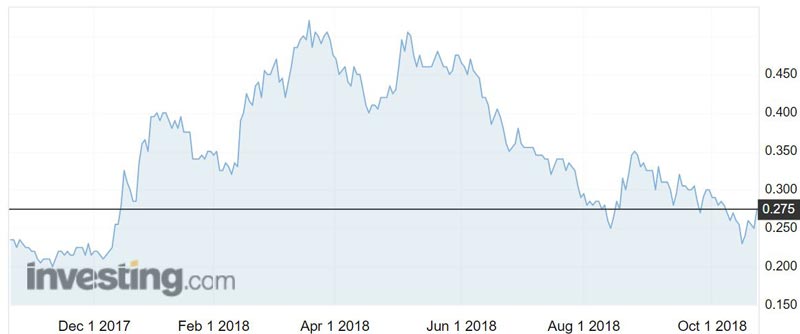Global Geoscience says it will have the ‘lowest cost’ lithium project in the world
Mining
Global Geoscience gained as much as 16 per cent this morning after the junior explorer said its Rhyolite Ridge project will be the lowest cost producer of lithium in the world.
The key to its low cost is the boron by-product, according to Global Geoscience (ASX:GSC).
“The boron co-product will generate sufficient revenue to cover nearly all operating costs and thereby enable Rhyolite Ridge to be the lowest cost producer of lithium in the world,” managing director Bernard Rowe told investors.
That sent shares up to an intra-day high of 29c.
A “pre-feasibility study” indicates the project will produce lithium carbonate at a cost of $US1796 ($2538) per tonne, with a boric acid credit.
Technical grade lithium carbonate is expected to sell for between $US12,693 and $US13,633 per tonne in the first three years of production, according to average price forecasts provided to Global Geoscience by Roskill and Benchmark Mineral Intelligence.
The next four years will see the price range between $US14,483 and $US16,862 when Global Geoscience starts selling battery-grade lithium carbonate.

The increasing lithium carbonate prices reflect the likely demand growth for lithium, particularly from 2025 when many market analysts forecast exponential growth for electric vehicle demand.
Boric acid sale prices, meanwhile, are estimated to be $US700 per tonne flat over the life of mine.
What is boron?
It’s a market worth more than $4 billion – pretty much the same size as the lithium market.
Rio Tinto (ASX:RIO) is the only ASX-listed producer of boron at the moment and the largest producer of the commodity globally, but its Californian mine is coming to the end of its life.
Boron is used in just about everything you can think of — from carpet, insulation and agriculture to soaps, cosmetics, TVs and mobile phones.
It’s the ingredient that allows glass to be made thin and strong enough to withstand heating and cooling without cracking.
It’s also allowed the emergence of wireless charging for mobile phones and electric vehicles. BMW recently unveiled a wireless charger for its plug-in, hybrid electric cars.
It’s even used in rocket fuel.
Global Geoscience’s Rhyolite Ridge project is the largest lithium and boron resource in North America.
It is expected to produce 20,200 tonnes of lithium carbonate and 173,000 tonnes of boric acid each year, which is forecast to generate $US6.6 billion in after-tax cash flow.
The PFS indicates the project will have a net present value (NPV) of $US1.8 billion and an internal rate of return (IRR) of 27.7 per cent.
NPV and IRR are metrics used to assess the profitability of a project. The higher the NPV and IRR, the more profitable a project will be.
“With approximately $75 million cash, we are able to undertake the work required to rapidly
progress Rhyolite Ridge into production,” Mr Rowe said.
“With the in-depth knowledge provided by the PFS, the company is well positioned to commence serious discussions with a diverse range of potential market and finance partners.”
Global Geoscience expects Rhyolite Ridge to be in production from 2021 for over 30 years, with the potential to extend the mine life further.
The company hopes to award major contracts for the processing plant in the second quarter of next year, with construction starting in the following quarter.